Emeritus Honors
| Emeritus Faculty | In Memoriam |
| Fred Frankel, PhD | David Boettiger, PhD 1942-2023 |
| Nigel Fraser, PhD | Helen Davies, PhD 1926-2022 |
| Howard Goldfine, PhD | Akira Kaji, PhD 1930-2023 |
| Sol Goodgal, PhD | Neal Nathanson, MD, PhD 1927-2022 |
| Yvonne Paterson, PhD | |
| Susan Ross, PhD | |
| Jeffrey Weiser, MD |
David Boettiger, PhD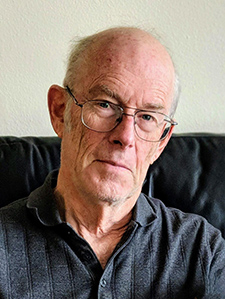
David Boettiger passed away on Friday October 6th, at his residence in Davis, CA, with his wife and two sons beside him. David was born in Baltimore, MD, but grew up mostly in Storrs CT, where his father was a professor at UConn. He attended Earlham, a Quaker College in Indiana, graduating in 1964. He was active in the civil rights movement and the peace movement, and joined the Peace Corps during the Vietnam War, where he served as a teacher in rural Ethiopia.
He returned to graduate studies in the US, where, as a PhD student with Howard Temin at the University of Michigan, in 1970 David helped discover the protein reverse transcriptase, an enzyme that can turn RNA into DNA. This discovery which would earn Temin the Nobel Prize in 1975. At the time it was believed RNA could only serve as a transient intermediate between DNA and protein, rather than templating DNA production. Reverse-transcriptase turned out to be critical in understanding cancer-inducing behavior of the Sarcoma virus in which the gene was first identified, as well as the replication and immune evasion of HIV, the virus which causes AIDs. The enzyme has also become among the most widely used in molecular biology today, in analysis of gene expression by sequencing the DNA transcripts produced from RNA templates.
David worked as a professor of microbiology at the University of Pennsylvania from 1974-2014, and professor emeritus until his passing in 2023. He studied the molecular mechanisms of cell adhesion. Cell adhesion is critical for the integrity of tissues and organs, and for the infection of cells by microbes and viruses. Among his works David showed adhesive complexes, like integrin, not only hold cells together on their matrix of extracellular proteins, but also transduce mechanical forces into chemical signals to alter cell behavior. In recognition of his contributions he was made a Fellow of the American Association for the Advancement of Science.
David enjoyed skiing, hiking, backpacking and sailing with his family. He was a Boy Scout and later Venture Scout leader in the Philadelphia area for nearly twenty years, introducing young people to the beauties of nature and the principles of teamwork, responsibility, and environmental stewardship. He is survived by his wife Barbara, sons Alistair and Carl, and grandchildren Edward, Matilda, and James.
Helen Davies, PhD
The department commissioned a film about Dr. Davies and her legendary career at the University of Pennsylvania.
Dr. Helen Davies was a leader in medical education, winning the Medical School’s Excellence in teaching award numerous times, and also the prestigious Distinguished Teacher Award from the Association of American Medical Colleges. Dr. Davies is widely remembered by medical students as a teacher—she famously helped new medical students learn the microbial pathogens by leading them in cheerful songs. For example, “Chlamydia” is sung to the tune of “Coming Around the Mountain”! For many Penn Med students, singing with Helen was one of the more memorable parts of their medical education. Dr. Davies is also remembered for striving over decades to advance opportunities and fairness for women faculty at Penn. She has left a lasting mark.
Read the University of Pennsylvania's Almanac article on Dr. Davies.
The Career of Dr. Howard Goldfine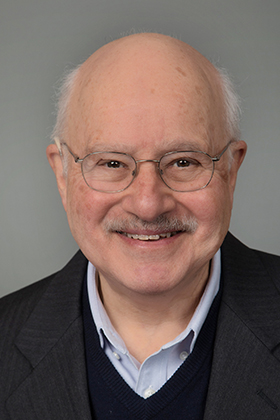
Dr. Goldfine came to Penn in 1968 as a tenured Associate Professor. Prior to that, he was at Harvard Medical School in the Department of Bacteriology and Immunology.
Dr. Goldfine received his Ph.D. in biochemistry from the University of Chicago. He then joined the laboratory of Erle Stadtman at NIH to study microbial metabolism. For further postdoctoral training, he joined the laboratory of Konrad Bloch at Harvard. There he and others unraveled the biosynthesis of unsaturated fatty acids in anaerobic bacteria. Later work in Bloch’s and other labs showed that this pathway was present in almost all bacteria. In collaboration with John Law, the enzyme responsible for cyclopropane fatty acid biosynthesis was found in Clostridium. In 1962, he began his own laboratory at Harvard Medical School. He showed that a Clostridium had plasmalogens (alk-1-enyl ether lipids). These lipids were first discovered in animal tissues, but had only recently been discovered in anaerobic Gram-negative bacteria. His first NIH grant titled Structure and Function of Bacterial Lipids continued for the next 25 years.
At Harvard and Penn, in collaboration with the laboratory of Roy Vagelos at Washington University in St. Louis, he showed that in bacteria the end product of fatty acid biosynthesis, acyl-acyl carrier protein (Acyl-ACP) was an obligatory source of acyl chains for phospholipid biosynthesis in prokaryotes. Goldfine’s laboratory studied E. coli mutants isolated during a sabbatical year in London. One of these was defective in the early steps of lipopolysaccharide biosynthesis. Studies on the membranes of this mutant revealed that as a consequence of defects in LPS biosynthesis major outer membrane proteins (porins) were not transported to the outer membrane.
His laboratory showed that in E. coli, cyclopropane fatty acids provided protection from hyperbaric oxygen, a clue to their function in many bacteria. In another major effort replacement of endogenously synthesized fatty acids with a variety of acyl chains enabled biophysical studies on plasmalogens and an understanding of the need for a balance of lipids in membrane that do and do not form bilayers when in isolation. This work in clostridia provided strong support for this concept first developed in Acholeplasma. An important study carried out in collaboration with Joachim Seelig at the University of Basel, showed that the conformation of plasmalogens in membranes differed from that of the more common diacyl phospholipids, leading to an understanding of their packing in biological membranes including those of the central nervous system.
In the 1990s the laboratory undertook studies on the phospholipases of the human pathogen Listeria monocytogenes. Two phospholipases C, one specific for phosphatidylinositol (PI-PLC) and the other non-specific, which could hydrolyze most of the phospholipids in human cell membranes. These studies in collaboration with the lab of Dan Portnoy, then a member of the department, showed that the two phospholipases had independent and overlapping roles in Listeria pathogenesis. The Goldfine lab showed that the Listeria PI-PLC was distinct from the classical enzyme first characterized in Bacillus cereus in that the Listeria enzyme had weak activity on PI-anchored proteins compared to the previously described enzymes. These studies showed that Listeria had evolved a unique enzyme that was able to produce calcium and PKC signaling within minutes of infection of macrophage cell lines and that these activities influenced invasion of cells by Listeria. The rapidity of these responses were dependent on the loss binding to PI-anchored proteins.
During the past decade, the Goldfine lab returned to the question of the mechanism of plasmalogen biosynthesis in anaerobic bacteria, which differs from the oxygen-dependent mechanism used by animal tissues. Their work over many years had shown that in bacteria plasmalogens are synthesized by reduction of preformed diacyl phospholipids. In 2020, another group identified the enzymes responsible for this reduction. Dr. Goldfine was elected a Fellow of the American Society for Microbiology and the American Association for the Advancement of Science. He served as an Associate Editor of the Journal of Lipid Research and as an Executive Editor of Analytical Biochemistry. Goldfine is serving as the first president of the newly-formed International Plasmalogen Society.
At Penn, Dr. Goldfine was Chairman of the Graduate Program in Microbiology, 1986-88 during the years of formation of the Biomedical Graduate Studies, which reorganized biomedical graduate education at the university. He was one of the founding members of the Association of Senior and Emeritus Faculty at the Perelman School of Medicine and served as its president 2009-10.
Akira Kaji, PhD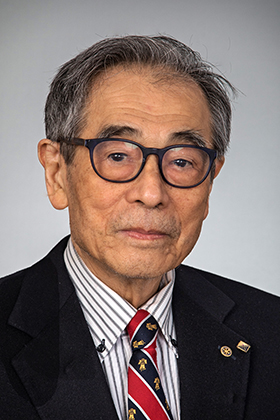
Dr. Kaji studied protein synthesis. Protein synthesis consists of four steps; initiation, elongation, termination and recycling of ribosomes for new round of translation. In 1970, he discovered the recycling step and continue to work on this step. In prokaryotes, this step is catalyzed by two soluble factors, ribosome recycling factor (RRF) and elongation factor G (EF-G). His lab discovered RRF (an essential protein for maintenance of bacterial life), and the gene for RRF (frr) (for review see (1,2). RRF is essential for maintenance of mitochondria in eukaryotes. His recent work elucidated the structural aspects of the mechanism of the action of RRF at the atomic level (3,4). GTP energy is constantly required to keep the subunits separated under physiological ionic conditions (5). He has recently shown that RRF, together with other factors is involved in the rescue of the stalled ribosomes (6).
He also extended his work on the ribosome recycling step to eukaryotes. In yeast, there is no RRF homologue in cytoplasm and nothing was known about the ribosome recycling step. In 2010, he showed that eEF3 and ATP disassemble, and hence recycle, the yeast post-termination complexes (PoTC) (7). eEF3 was already known to be essential for peptide chain elongation in yeast but he found the second important function of this factor the ribosome recycling. He recently found that the order of events in the yeast recycling is that tRNA release, mRNA release and ribosome splitting (8).
The following is a short review of his past work. In 1963, he discovered that specific tRNA binds to the complex of mRNA and ribosome. This finding was essential to decipher the genetic code (9). Regarding RRF, upon in vivo inactivation of RRF, the ribosome starts the unscheduled translation downstream from the termination codon. Crystal structure by X-ray crystallography as well as solution structure by NMR has revealed that RRF is a near perfect structural mimic of tRNA. Indeed, he found that RRF functionally mimics tRNA in that it moves in the inter-subunits space like tRNA does. However, the mode of RRF binding to the ribosome is different from that of tRNA. We also discovered arginyl-tRNA protein transferase in 1963(10). This enzyme is an essential for higher eukaryotes and involved in post-translational protein modification (11)
1. Janosi, L., Hara, H., Zhang, S., and Kaji, A. (1996) Advances in biophysics 32, 121-201
2. Hirokawa, G., Demeshkina, N., Iwakura, N., Kaji, H., and Kaji, A. (2006) Trends in biochemical sciences 31, 143-149
3. Yokoyama, T., Shaikh, T. R., Iwakura, N., Kaji, H., Kaji, A., and Agrawal, R. K. (2012) EMBO J 31, 1836-1846
4. Pai, R. D., Zhang, W., Schuwirth, B. S., Hirokawa, G., Kaji, H., Kaji, A., and Cate, J. H. (2008) J Mol Biol 376, 1334-1347
5. Hirokawa, G., Iwakura, N., Kaji, A., and Kaji, H. (2008) Nucleic acids research 36, 6676-6687
6. Vivanco-Dominguez, S., Bueno-Martinez, J., Leon-Avila, G., Iwakura, N., Kaji, A., Kaji, H., and Guarneros, G. (2012) J Mol Biol 417, 425-439
7. Kurata, S., Nielsen, K. H., Mitchell, S. F., Lorsch, J. R., Kaji, A., and Kaji, H. (2010) Proceedings of the National Academy of Sciences of the United States of America 107, 10854-10859
8. Kurata, S., Shen, B., Liu, J. O., Takeuchi, N., Kaji, A., and Kaji, H. (2013) Nucleic acids research 41, 264-276
9. Kaji, A., and Kaji, H. (2005) The History of Deciphering the Genetic Code: Setting the Record Straight. in The Inside Story: DNA to RNA to Protein (Witkowski, J. A. ed.), Cold Spring Harbor Laboratory Press, Cold Spring Harbor, NY. pp 209
10. Kaji, H., Novelli, G. D., and Kaji, A. (1963) Biochimica et biophysica acta 76, 474-477
11. Kwon, Y. T., Kashina, A. S., Davydov, I. V., Hu, R. G., An, J. Y., Seo, J. W., Du, F., and Varshavsky, A. (2002) Science 297, 96-99
Neal Nathanson, MD, PhD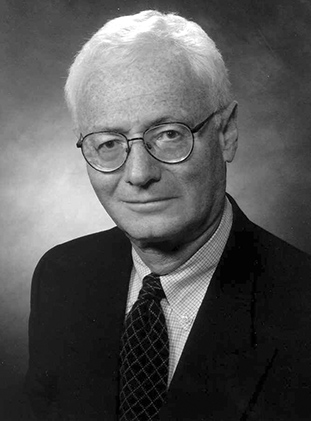
Dr. Neal Nathanson was a Chair of the Department of Microbiology, and a giant figure in the history of biomedical research. He received MD and PhD degrees from Harvard University, then completed clinical training in internal medicine at the University of Chicago and postdoctoral training in virology at the Johns Hopkins University. Early in his career, Dr. Nathanson spent two years at the Centers for Disease Control, where he headed the Poliomyelitis Surveillance Unit, and helped identify and remove contaminated lots of polio vaccine early during the vaccine roll out. Later he joined the faculty of the Johns Hopkins Schools of Medicine and Public Health, where he became Professor and head of the Division of Infectious Diseases in the Department of Epidemiology. He then moved to the University of Pennsylvania where he chaired the Department of Microbiology for 15 years. From July 1998 to September 2000, Dr. Nathanson served as Director of the Office of AIDS Research (OAR) at the National Institutes of Health. From 2000-2003, Dr. Nathanson served as Vice Provost for Research, at the University of Pennsylvania. He later served as Associate Dean, Global Health Programs, in the School of Medicine (2004-2014).
In this video he describes a few of his experiences.
Legendary Virologist Neal Nathanson from Ed Hille on Vimeo.
The Career of Dr. Yvonne Paterson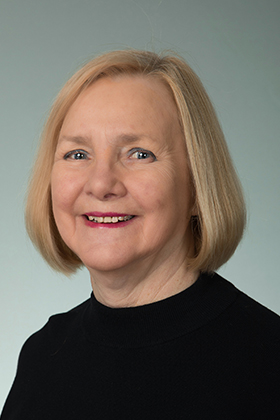
Yvonne Paterson joined the Penn faculty in 1988 as an Associate Professor with tenure and was promoted to full Professor in 1992. She was born in the United Kingdom into a working class family and was the first in her family to complete a high school education and go to university. Dr. Paterson received a B.Sc.Tech and M.Sc. in Biochemistry from the University of Manchester Institute for Science and Technology. Following this, she migrated to Australia where she studied Philosophy and Pure Mathematics at the Australia National University in Canberra for which she received a B.A. Dr. Paterson settled in Melbourne where she completed her Ph.D. at the University of Melbourne with studies in Sydney Leach’s laboratory on protein folding. Largely because of the absence of advancement for women in science in Australia, she pulled up roots again and moved, as a single parent with her two young sons, to Cornell University and the laboratory of Harold Scheraga in the Chemistry Department. There she continued her research training in how amino acid sequences influence the structure, folding, thermodynamics and biological activity of proteins.
During this period she became interested in immunology and, despite having no training in the subject, succeeded in obtaining a faculty position in the Department of Immunology at the Scripps Research Institute in La Jolla, California, where she applied her training in protein chemistry to investigate the interactions between antibodies and protein antigens and between MHC molecules and antigenic peptides recognized by T cells. After six years at the Scripps Research Institute she was recruited by Dr. Neal Nathanson to the Microbiology Department.
At Penn, Dr. Paterson continued her interest in applying protein chemistry to immune interactions for a number of years. In collaboration with Drs. Heinrich Röder and Walter Englander in the Department of Biochemistry and Biophysics, she was the first person to use hydrogen exchange and 2D NMR to study antibody/antigen interactions. However, finding herself in a Department of Microbiology took her research interests in a new direction. It had recently been discovered by Dr. Daniel Portnoy, among others, that the facultative intracellular bacterium Listeria monocytogenes used its virulence factor Listeriolysin O to escape from the confines of the phagolysosome into the cytosol of the cell, where it lived and reproduced. Dr. Portnoy joined the Microbiology faculty at the same time as Dr. Paterson. Since antigenic peptides, recognized by cytotoxic T cells, were loaded onto MHC class I molecules after processing by the ubiquitin/ proteasome complex in the cytoplasm of the cell, Portnoy and Paterson reasoned that if Listeria were transformed to express and secrete foreign antigens it could act as a vector to target them for the induction of cytotoxic T cells. They verified this using influenza nucleoprotein as the target antigen. Later, Dr. Paterson applied this approach to tumor immunotherapy and showed that Listeria genetically manipulated to express and secrete tumor antigens could induce the regression of established tumors in animal models of cancer. Penn filed patents based on all of her discoveries, supporting founding of Advaxis Immunotherapies Inc to develop this approach clinically. The company has several clinical trials ongoing for various cancers and has won many awards for Dr. Paterson’s Listeria vaccine approach, including the World Vaccine Congress’ Best Therapeutic Vaccine in 2012, the Medical Visionary Award from the Farrah Fawcett Foundation in 2015, and the Vision of Hope award from the Sarcoma Foundation of America in 2016. Dr. Paterson has over 45 U.S. patents and numerous international patents licensed to Advaxis. She was named the Penn Center for Innovation’s “Inventor of the Year” in 2017 and shared Penn’s “One Health” award with Dr. Nicola Mason in the School of Veterinary Medicine for their work in using Listeria to treat osteosarcoma in dogs.
Dr. Paterson has served in many administrative roles at Penn. She was the Associate Dean for Postdoctoral Research Training and Director of Biomedical Postdoctoral Programs for five years where she revised many of the rules governing the appointment and treatment of postdoctoral fellows. She also extended the training programs to CHOP, Monell, Wistar, and the School of Nursing and initiated a number of new training programs for postdocs whose career pathways were not focused on academic research. Dr. Paterson was the director of two NIH funded training programs “The immunobiology of normal and neoplastic lymphocytes” (CA09140) and the IRACDA training program, “University of Pennsylvania Postdoctoral Opportunities in Research and Teaching (Penn-Port)” (K12GM081259).
She is particularly proud of the Penn-Port program, now directed by Dr. Janis Burkhardt, which provides training in research and in teaching to postdocs. It includes a college teaching course that emphasizes teaching in a culturally sensitive environment. The trainees spend at least 25% of their time teaching in minority serving institutions. It is partnered with three schools, Lincoln University, an HBCU, Delaware County Community College and Rutgers University – Camden campus. The purpose of the program is to put cutting-edge young researchers into minority schools in order to inspire the students to consider a career in research. Most of the fellows supported by the program are under-represented minorities and most of them leave for faculty positions in small colleges and universities where they diversify the faculty.
Dr. Paterson also served as Associate Dean for Research and Director of the Office of Nursing Research in the School of Nursing, under Dean Afaf Meleis. In this position she was responsible for administering all research funding, ensuring strict adherence to research regulations and providing training in various aspects of nursing research. During her tenure in this position she inaugurated the new research Center for Global Women’s Health. You can learn more about Dr. Paterson’s contributions to Penn here.
Dr. Paterson has over 180 research publications and has edited two books. She is a fellow of the National Academy of Inventors, the American Academy of Microbiology and the American Association of Arts and Sciences and was selected in 2014 for inclusion in PharmaVoice’s 100 Most Inspiring People in the Life-Sciences Industry.

